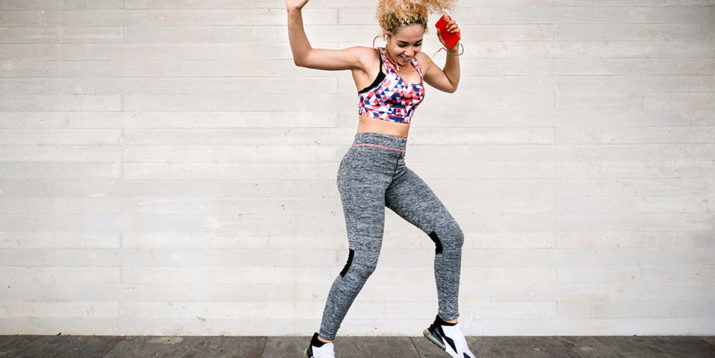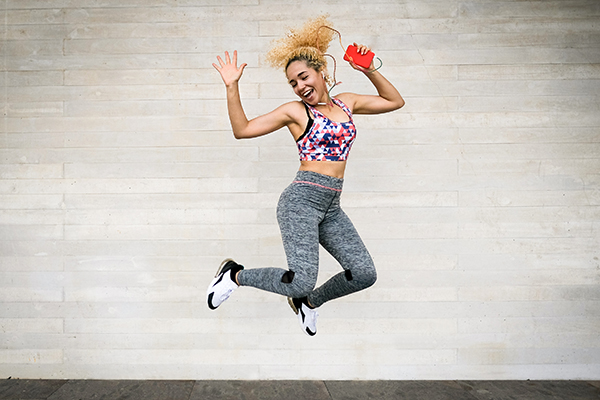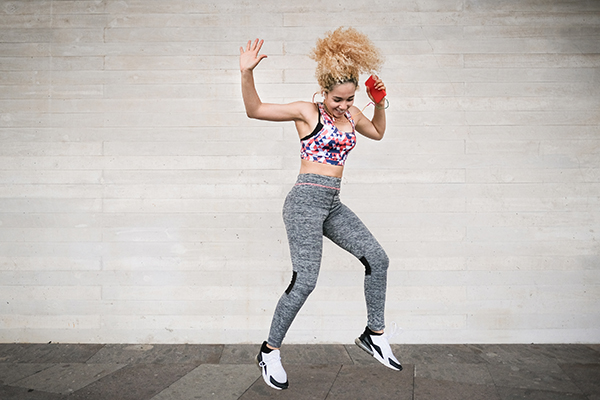Does Dancing Really Count as Cardio?

We get it: Some days you’re just not in the mood to hit a certain number of reps or burpees. So, why not turn up the music and just dance?
But is dancing cardio?
In a word: yes!
Dance workouts are a great way to activate your whole body and even boost your mood.
Some of us only dance when we’re in crowd situations like at bars and weddings — and given that it’s an activity we associate more with partying than going to the gym.
“Dance can definitely be a cardio workout, especially when you’re moving nonstop and repeating previously learned steps throughout the entire workout,” says dance instructor Rizwan Dhanidina.
Prime example: LET’S GET UP!, a fitness program with workouts that consist of easy-to-follow cardio dance sequences, bodyweight resistance training, and other moves set to music.

What Counts as Cardio?
Firstly, we should clear up what cardio actually is. Cardio workouts are activities that get your heart pumping, and they’re also known as cardiovascular or aerobic exercise.
What’s the difference between cardio (aerobic) and anaerobic exercise?
Anaerobic exercise usually enhances muscle strength, power, and size, as well as speed. Aerobic exercise builds endurance.
Ideally, you need a mix of both in your routine — and studies have found they both benefit your cardiovascular system.
On a really basic level, if you’re breathing hard continuously but can still carry a conversation, you’re getting an aerobic workout.
In contrast, if you’re working so hard you can’t manage to talk, that’s anaerobic activity.
When we drop the word “cardio” in fitness these days, we’re usually talking about fast-paced workouts that get your blood going.
Ultimately, dance is cardio, but there’s more.
“Dance can be both aerobic and anaerobic exercise; however, it depends on the type of dance and how intense you are moving,” says Annamaria Louloudis, M.S., R.D.N., and certified Zumba instructor.
LET’S GET UP! is a mix of cardio dance sequences and bodyweight resistance training.
So it’s mostly aerobic, but a little anaerobic, too.
Is 30 Minutes of Dancing Good Cardio?
The Centers for Disease Control and Prevention (CDC) recommends getting 150 minutes per week of moderate intensity aerobic activity, or 30 minutes a day for five days, as well as muscle strengthening.
The easy-to-remember guideline is: “Cardio gets you breathing harder and your heart beating faster.”
Dancing is a great way to get your heart and breathing rate up — and the higher the intensity, the tougher the workout.
“A dance workout like any other workout that gets your heart-rate pumping, and has you sweating bullets by the end of it, is a good determinant of an effective cardio workout,” says Louloudis.
LET’S GET UP! keeps you moving for 30 to 35 minutes, so you get a solid workout. This type of cardio dance workout can burn up to 250 calories per half-hour.
But dance may have a mental edge over some cardio activities like the elliptical and running.
“With dance, you aren’t just moving in one direction for a long period of time like with running,” says Louloudis.
So if you get bored easily on a treadmill, this type of workout could be for you.

How to Warm Up for Cardio Dance Workout
It’s important to prep your body for any workout, including dancing.
“A warmup helps to slowly rev up your cardiovascular system and increases blood flow to your muscles,” says Louloudis. “It’s a good idea to warm up before and cool down after a dance workout for about five minutes each.”
To get your blood going, try some jumping jacks, light jogging, or lunges, and engage in some light stretching when you feel those muscles waking up, recommends Louloudis.
Warming up before a workout may also help to decrease your risk of injury and reduce muscle soreness post-workout.
How to Cool Down after a Cardio Dance Workout
“Cooling down after a workout is equally as important,” says Louloudis. “It allows for a gradual recovery of your blood pressure, blood flow, and heart rate.”
And your future self will thank you for adding some flexibility to the mix, too.
“A few minutes of stretching, especially the calves, quads, and hamstrings, is helpful,” says Dhanidina.
